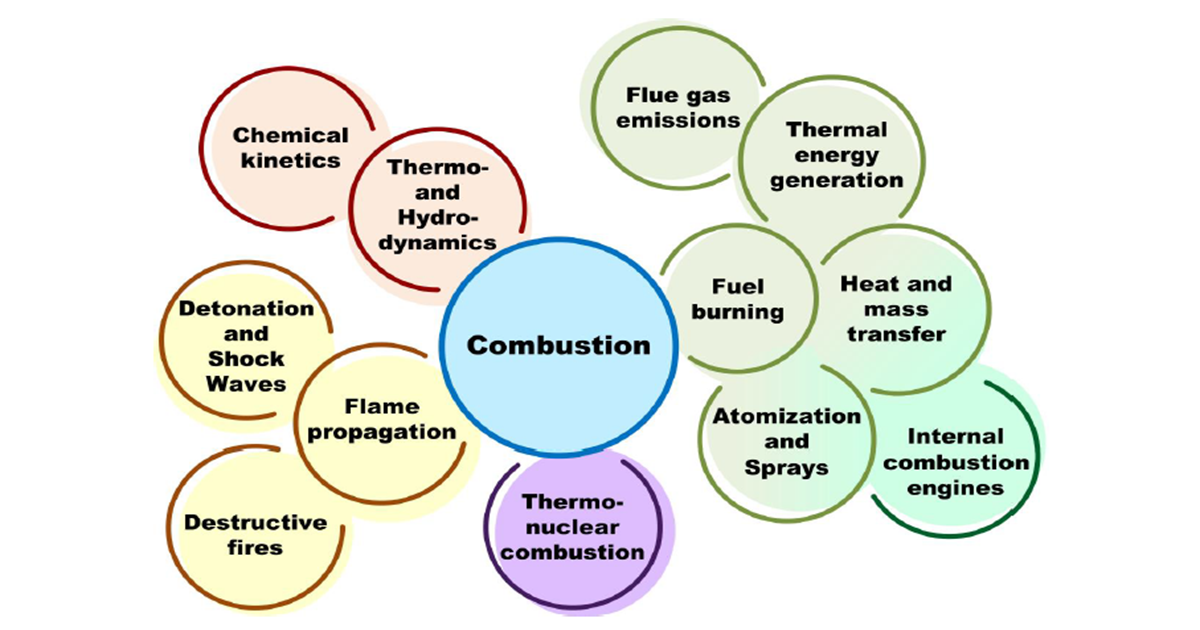Interdisciplinary Researches for Combustion Theory
A special issue of Applied Sciences (ISSN 2076-3417). This special issue belongs to the section "Applied Thermal Engineering".
Deadline for manuscript submissions: closed (30 September 2023) | Viewed by 18574

Special Issue Editors
Interests: fuels; combustion chemistry; waste to energy; thermal power engineering; environmental performance
Special Issues, Collections and Topics in MDPI journals
Special Issue Information
Dear Colleagues,
Combustion theory plays an important role in industry and everyday life. It covers a wide range of aspects, from thermal energy generation to destructive fires. The widely known traditional approaches to the study of typical combustion processes have practically exhausted their potential. Therefore, a promising direction in the development of modern provisions of the combustion theory is the interdisciplinarity of experimental and theoretical studies.
As before, within all practical applications of combustion theory, the main aim is to achieve relatively high efficiency in terms of energy, economy, and environmental pollution.
This Special Issue will be dedicated to new interdisciplinary approaches and combustion theory results. Subjects that will be discussed in this Special Issue will not only focus on traditional hydrocarbon fuels and methods of their combustion, but also on the advanced multi-component fuel compositions and perspective methods of their ignition and combustion in relation to power-generating plants for various purposes.
Dr. Dmitrii O. Glushkov
Dr. Dmitriy V. Antonov
Guest Editors
Manuscript Submission Information
Manuscripts should be submitted online at www.mdpi.com by registering and logging in to this website. Once you are registered, click here to go to the submission form. Manuscripts can be submitted until the deadline. All submissions that pass pre-check are peer-reviewed. Accepted papers will be published continuously in the journal (as soon as accepted) and will be listed together on the special issue website. Research articles, review articles as well as short communications are invited. For planned papers, a title and short abstract (about 250 words) can be sent to the Editorial Office for assessment.
Submitted manuscripts should not have been published previously, nor be under consideration for publication elsewhere (except conference proceedings papers). All manuscripts are thoroughly refereed through a single-blind peer-review process. A guide for authors and other relevant information for submission of manuscripts is available on the Instructions for Authors page. Applied Sciences is an international peer-reviewed open access semimonthly journal published by MDPI.
Please visit the Instructions for Authors page before submitting a manuscript. The Article Processing Charge (APC) for publication in this open access journal is 2400 CHF (Swiss Francs). Submitted papers should be well formatted and use good English. Authors may use MDPI's English editing service prior to publication or during author revisions.
Keywords
- fuel
- combustion
- physico-chemical regularities
- emission
- experiment
- numerical simulation
- practical application
- engine
- boile
- combustion chamber
Benefits of Publishing in a Special Issue
- Ease of navigation: Grouping papers by topic helps scholars navigate broad scope journals more efficiently.
- Greater discoverability: Special Issues support the reach and impact of scientific research. Articles in Special Issues are more discoverable and cited more frequently.
- Expansion of research network: Special Issues facilitate connections among authors, fostering scientific collaborations.
- External promotion: Articles in Special Issues are often promoted through the journal's social media, increasing their visibility.
- Reprint: MDPI Books provides the opportunity to republish successful Special Issues in book format, both online and in print.
Further information on MDPI's Special Issue policies can be found here.






